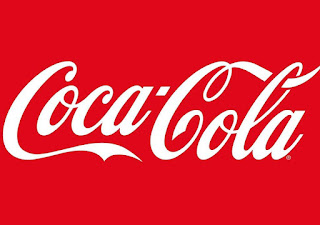Being ‘Nose-up’ is Not Viable Marketing Wisdom!
This is only my second
piece in Zambia, while still learning how things work here at ground zero! My
first take after a few interactions with ‘people in business’ has been that only
a minority actually understand the meaning and essence of ‘Marketing’ out here
-- leave aside practicing it. Anyone from a mature market would get baffled to
know that many actually misjudge “Sales” function to be Marketing and Selling
encompasses all. I don’t blame them, actually that is what is experienced all
around here, selling. Excepting a few
names -- including the homegrown ones, who have managed to pop up their
heads with pride, when one screamed, “Marketing”!
By virtue of spending long professional career in markets thriving with brands of the world, where brand battle is a daily occupation -- I needed to retract my thoughts a bit – before embarking on a subject which should be of understandable interest to the local business community and students of marketing alike.
A brand, after it is established over a period of time, forms its own “personality” & appearance in certain specific way in the ‘minds’ of its audience. Just the same way that we recognize certain personalities who have acquired fame on the basis of occupations they are intimately associated with. Tiger Woods with Golf, Michael Jackson as pop star, Sachin Tendulkar with Cricket or Obama as Politician. They are not known in any other way. Just the same way Cosmopolitan is known as a lifestyle magazine, Coca Cola is a cola soft drink, Colgate is for toothpaste or dental care and the list goes on. Whenever an established brand tried to “impose” itself on its audience with ‘anything’ but the way it is known in public domain – it failed. Yes, some brands succeeded in putting through a new line of product or service under the same name -- of course after in depth market research. Upon close examination one would find that these successful diversifications have had some relation with the parent line of business. We call it related diversification. However all those “nose up” brand custodians, whenever they tried to introduce anything (unrelated line extensions) without a proper understanding of their audiences, have failed miserably.
To illustrate in a better manner for our readers, let us go by a few real examples. Since 1983 when Coca Cola’s market share was sliding with the advent of the new brand Pepsi Cola, it decided to change its formula and introduced as the ‘new Coke’. Even though Coca Cola’s marketing department had done intensive objective feedback research before embarking on the new formula – they had terribly missed something! The unimaginable emotional connection of their consumers with brand Coke! So the day it was launched with a big hype, it immediately flopped. There were even public protests! An immediate turnaround to re-launch the classic coke only saved the reputed company from complete annihilation by Pepsi Cola. The new formula was abandoned and Coca Cola publicly said “sorry” to its consumers!
There are others who failed while trying to “impose” on their audience by something they are not known for. Cosmopolitan – the 36 language publication giant tried to launch Cosmo Yoghurt thinking it would appeal to its health & beauty conscious audience to cut down on body fat. Instead it had to withdraw the product almost immediately. Pepsi tried to launch Crystal Pepsi – a coffee substitute in late eighties and failed. Tata Motors in India, who have always been famous for heavy utility vehicles failed miserably with their initial attempts at launching 4x4 vehicles like Sierra and Safari. What TATAs did later on was after gradual preparation of their launching ground over a period of time, through hardcore marketing activities targeting their core audience, to bring in successful acceptance levels.
It is not that unrelated diversification is a ‘taboo’ for any brand, NO! However it needs to be planned after extensive and in-depth study of their existing as well as prospective audience to gauge possible acceptance levels. But a “dumping” approach is definitely a prescription for failure. There are many examples of diversified brand extensions done successfully, for instance look at the Virgin Group. They have been diversified over the years from airline to music to finance to media to commercial space travel et all. It is another matter that they too had failed with Virgin Cola in the mid nineties not getting sufficient acceptance levels from the targeted consumers in the UK. Bottom line is, one needs to prepare the ground for any brand extension ---and “more extensively so” for the unrelated ones.
With these thoughts in mind, it would be interesting to see how Coca Cola Company fares with its new venture into branded milk market in the USA this new year (2015) with a high end brand named Fairlife!







No comments:
Post a Comment